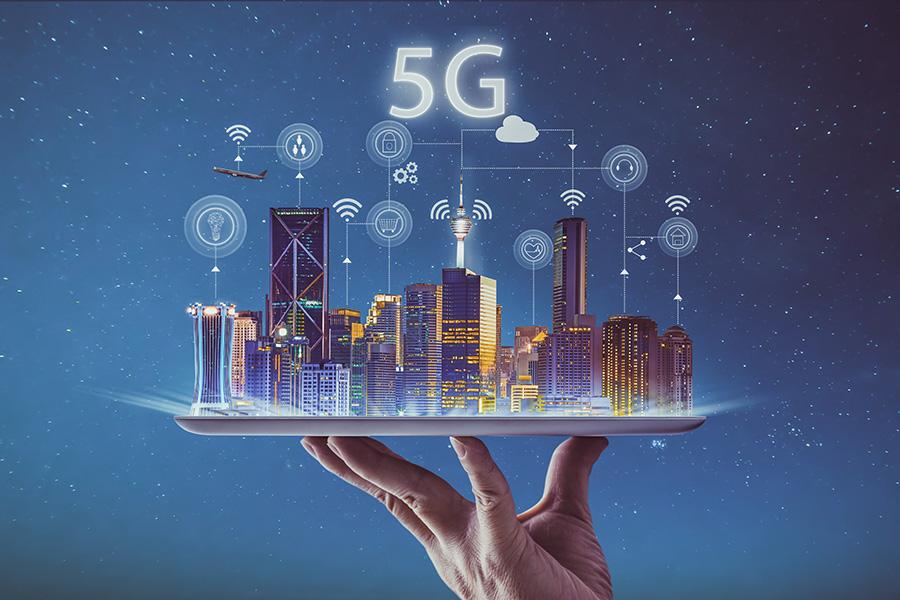
By Dr. Jaijit Bhattacharya
With over a billion subscribers as of March 2023, the Indian Telecom Sector has become a fundamental enabler of the Indian digital economy. However, this fundamental layer of our modern economy appears to be on shaky grounds.
Recent years have seen an immense churn in this sector, owing to financial stress, consolidation, rapid multiple changes in technology that required significant multiple rounds of capital infusion, and regulatory updates.
India is now down to only two telecom companies that are somewhat financially stable and have been able to raise large amounts of capital to support the humongous capital requirements for the burgeoning networks.
We have a third telecom company that appears to be hobbled with tremendous debt that has been incurred to fund the continuous upgrade of the networks. With a very limited number of telecom service providers (TSPs), and less than satisfactory financials, the responsibility of maintaining and upgrading this infrastructure has become more challenging. A competitive and financially healthy telecom sector is essential to sustain India’s digital growth and to carry the numerous digital startups that continue to add significantly to India’s growth and job creation.
We cannot afford to lose any more companies in the telecom sector.
Financial Health
The extremely low Return on Capital Employed (ROCE) in the telecom sector, starkly reflects the current precarious situation of the industry. ROCE reflects what is the return on the investments made by the investors. Even though the telecom companies appear to be profitable, their investors will find it more profitable to keep their money in bank fixed deposits rather than invest into telecom networks.
According to the Cellular Operators Association of India (COAI), the three leading private sector telcos in India, that is Bharti Telecom, Jio and Vodafone-Idea, together recorded a ROCE of around 5% over the past three years. In comparison, bank’s Fixed Deposit rates are around 7-8%, and a healthy ROCE benchmark for attracting investments in India, is around 20%. Therefore, no rational investor will continue to invest into India’s telecom sector, unless it starts providing acceptable returns.

While there has been a modest growth in the Average Revenue per User (ARPU) over the last two years through increase in consumer tariffs for telecom, it is challenged by resistance to such hikes in a price-sensitive market, which could lead to subscriber loss as the paying capacity in the country continues to be low.
The key reason for low returns in telecom is the frequent refresh rate of technology, thereby leading to high capital expenditures for maintenance of an advanced telecom network, that can support the exponentially rising telecom traffic. Significant investments have been made for digital infrastructure expansion, evident from the increase in Base Transceiver Stations (BTSs) from 14.5 lakh in March 2017 to 25.5 lakh in March 2023.
In fact, within a year of the clarion call by the government on 5G, India has become the second largest country for 5G deployment. Moreover, a GSMA report forecasts the Indian Telecom sector would need around $19.5 billion by 2025 in 5G technology, covering spectrum equipment, towers, fiber networks, and other infrastructure. License fees and spectrum usage charges add to these investments.
Clearly, the industry would need to raise more capital to keep the networks running efficiently, and that is where the challenge is. With low ROCE, industry will soon run out of steam to raise more capital while not being able to raise more tariffs.
India continues to be the cheapest large economy in terms of telecom costs.
What are the possible ways out?
So what is the way out for the telecom industry? Is the Indian telecom industry doomed in its quest to provide the best of telecom networks that is continuously upgraded to ensure that it supports the exponentially rising telecom traffic? Will the pincer movements of ever increasing rapacious appetite for capital investments in telecom while facing the inability to increase tariff due to price sensitivity of the market, mark the demise of the telecom industry? Will it lead to consolidation of the three telecom players, thereby making India a monopolistic telecom market, harking back to the days of government run telecom monopolies? What is the way out?
It is also important to note that there are telecom consumers who consume disproportionately more data than others as they hook on to services of Large Traffic Generators (LTG) such as Netflix, Youtube etc. So, those who do not use such services, are in effect subsidizing those who do. This does not appear to be a fair arrangement.
One of the options that is being actively looked at globally is that those who put pressure on the network and because of whose traffic, we see the telecom networks requiring to increase their investments, should somehow contribute to the financing of the telecom network. This essentially boils down to sharing of revenues by Large Traffic Generators (LTG) with the telecom networks. This is referred to as “Fair Share Charge”.
Such a proposal at a first glance looks heretic to the concept of Net Neutrality. Net Neutrality essentially implies that (a) internet service providers should enable access to all content and applications regardless of the source, and (b) without favouring or blocking particular products or websites. Being a vocal champion of Net Neutrality, any violation of this principle is deeply unsettling as it would lead to stifling of innovation and a discriminatory connectivity regime that is detrimental to the economy and to how we have come to live in the digital world.
However, taking a closer look at the proposal shows that the context in which the principles of net neutrality was conceived, and the proposal that is being considered to save the telecom industry in India, are vastly different. The proposal of LTGs, which are very few in number but use up disproportionately high Internet infrastructure, needing to share their revenues with the telecom network, does not lead to either (a) blocking of access to any content/ application or (b) favouring any content or application. This is because the LTGs are large behemoths who have the paying capacity and who have the power to muscle their way to their target audience.
These are not vulnerable startups or weaker sections of the society. These are multi-billion dollar giants that we are trying to protect at the cost of our telecom networks, and their network access is being subsidized by the poorest person who is contributing to the network infrastructure through her monthly tariff payments. Net Neutrality was conceived to support the weakest in society and industry so as to ensure that they are not left behind. LTGs sharing their revenues definitely does not fit into this concept.
Clearly, if networks that are built to promote education, health, healthy debates in the society and creation of internet based jobs are used for watching videos for entertainment, then companies who are driving these large contents, must also contribute to the sustenance of the network. This is not a violation of net neutrality but is a step towards democratization of the network, wherein, the poor do not subsidize the rich.
Fair Share Charge: A Case for Collaboration
A collaborative framework between such LTGs and Network Providers can help in delivering quality access to the internet, at a time when telcos are investing in network expansion. A ‘Fair Share Charge’ mechanism can be a significant step forward.
The ‘fair share charge’ may be understood as a financial contribution made by LTGs to be paid to the TSPs/ network providers, based on the actual data traffic carried over their networks. LTGs leverage the extensive infrastructure provided by TSPs to reach their users, and as mentioned earlier, often provide similar or competing services to users as TSPs. Due to the high data demand entailing the use of such applications, there is a need for a commensurate investment in the underlying networks, so as to develop, expand, maintain, and upgrade services provided by not only telcos, but also such applications. Given this new demand, a part of the expenditure for this investment may come from the proposed ‘fair share charge’.
Addressing Concerns
The ‘fair share charge’ mechanism considers LTGs as equal stakeholders in upholding seamless quality of services, and is based on the volume of traffic generated, without exercising any control over the treatment, or the delivery of content or the content provider. This mechanism also explicitly excludes startups and smaller enterprises from the ‘fair share charge’, keeping in view the need for an enabling environment for digital innovation.
A ‘fair share charge’ also addresses the issue of low-users of internet traffic that end up paying for the expansion of telecom infrastructure.
Such discussions have earnestly begun in South Korea, one of the global leaders in having a networked society. With a series of proposed and enacted provisions under the Digital New Deal, the Telecommunications Business Act, and Interconnection Standards mandating more stringent financial and regulatory arrangements between LTGs and Internet Service Providers (ISPs), South Korea has taken a lead in ensuring that LTGs are an active financial participant in maintaining an advanced network.
However, India’s ambitions to ensure universal and affordable access to the internet and its services is an overarching philosophy in this space. India needs to solve the issue at home and also perhaps lead the global dialogues on moving towards a more collaborative, and constructive framework between LTGs and TSPs.
In Conclusion
Navigating the challenges in India’s telecom sector requires a collaborative approach between telecom service providers and large traffic applications. Engaging in constructive dialogue and frameworks can help bolster network capacities and improve service quality, thereby contributing to the growth of the digital economy. This can also ensure a win-win scenario that propels India’s digital aspirations forward, in a globally competitive landscape.
This article first appeared in ET Government, https://government.economictimes.indiatimes.com/news/technology/solving-the-telecom-conundrum-revenue-sharing-for-equitable-networks/104814906